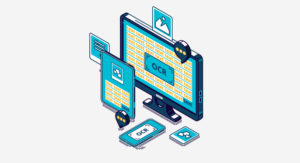How to Fight ID Fraud in a World of Generative AI?

Generative AI is the buzzword of the year, apart from all the good that comes from it, it also has increased the risk of fraud. Fraudsters have been using AI tools to defraud people.
Most businesses today are ill-prepared to fight GenAI ID fraud. In this blog, we’ll be talking about how to fight ID fraud in the world of GenAI.
Generative AI is Changing ID Fraud in 2 Ways
Fake IDs have been around for decades, but their use today can lead businesses to be bankrupt if fraud isn’t detected at the right time. Using generative AI to create fake IDs and other documents is broken down in two ways:
- Sophisticated bad actors: Sophisticated bad actors are using Gen AI to build fake email IDs at scale and increase the rate of their attacks.
- Unsophisticated bad actors: Bad actors who couldn’t build quality fake IDs earlier can now create higher-quality fake IDs or purchase a complete package with a fake ID, documents, and more.
ID and fake document fraud is super common, on average 49% of all companies have experienced a fraudulent attack that involved a fake or stolen document.
How to Tackle AIFAQs-Generated Fake IDs?
Fraudsters are always investing in new technology to create better fake IDs, making it essential for businesses to keep updating their fraud-fighting capabilities. For example, using liveness checks and monitoring device signals can help you spot when an AI-generated selfie is uploaded through camera hijacking.
For businesses to perfectly tackle AI-generated fake IDs, they have to take a holistic approach to detecting and fighting fraud:
- Continue using existing fraud
As GenAI is becoming available to everyone, fraudsters can use it for low cost, and ease of use ultimately increases the number of unsophisticated attacks.
- Consider requested electronic IDs
You can use Mobile driver’s licenses and NFC-enabled IDs and use them to use it verify identities.
- Explore different data types
Instead of trying to detect AI-generated IDs, use behavioral and passive signals to spot bad actors. You can take advantage of device fingerprints, browser fingerprints, email risk reports, and more.
- Invest in a document verification solution
Businesses should invest in a third-party solution that can help them detect the use of fake IDs. DIRO’s online document verification solution can verify documents instantly in over 190+ countries. With DIRO’s technology, businesses can verify documents directly from the issuing database.
FAQs
1. How does generative AI contribute to ID fraud?
Generative AI can be misused to create highly convincing fake identities, deepfake videos, synthetic voices, and manipulated documents. These sophisticated forgeries can deceive individuals and systems, leading to identity theft and fraud.
2. What are deepfakes?
Deepfakes are AI-generated videos or audio recordings that manipulate someone’s likeness or voice, making it appear as though they are saying or doing something they never did. This technology can be used maliciously to impersonate individuals for fraudulent purposes.
3. How can individuals protect themselves from ID fraud facilitated by generative AI?
- Be Skeptical: Verify the authenticity of unexpected requests or communications, especially if they involve sensitive information or financial transactions.
- Use Strong Authentication: Enable multi-factor authentication (MFA) on all important accounts.
- Monitor Accounts: Regularly check financial statements and credit reports for unusual activity.
- Educate Yourself: Stay informed about the latest tactics used by fraudsters and learn how to recognize potential scams.
4. What steps can organizations take to combat ID fraud with generative AI?
- Implement Advanced Security Measures: Use AI-powered security solutions to detect anomalies and potential fraud in real-time.
- Employee Training: Educate employees about the risks of generative AI and how to recognize and respond to potential threats.
- Data Protection: Securely store and handle personal and sensitive information to prevent unauthorized access.
- Verification Processes: Enhance identity verification processes to include biometric checks and other multi-factor authentication methods.












